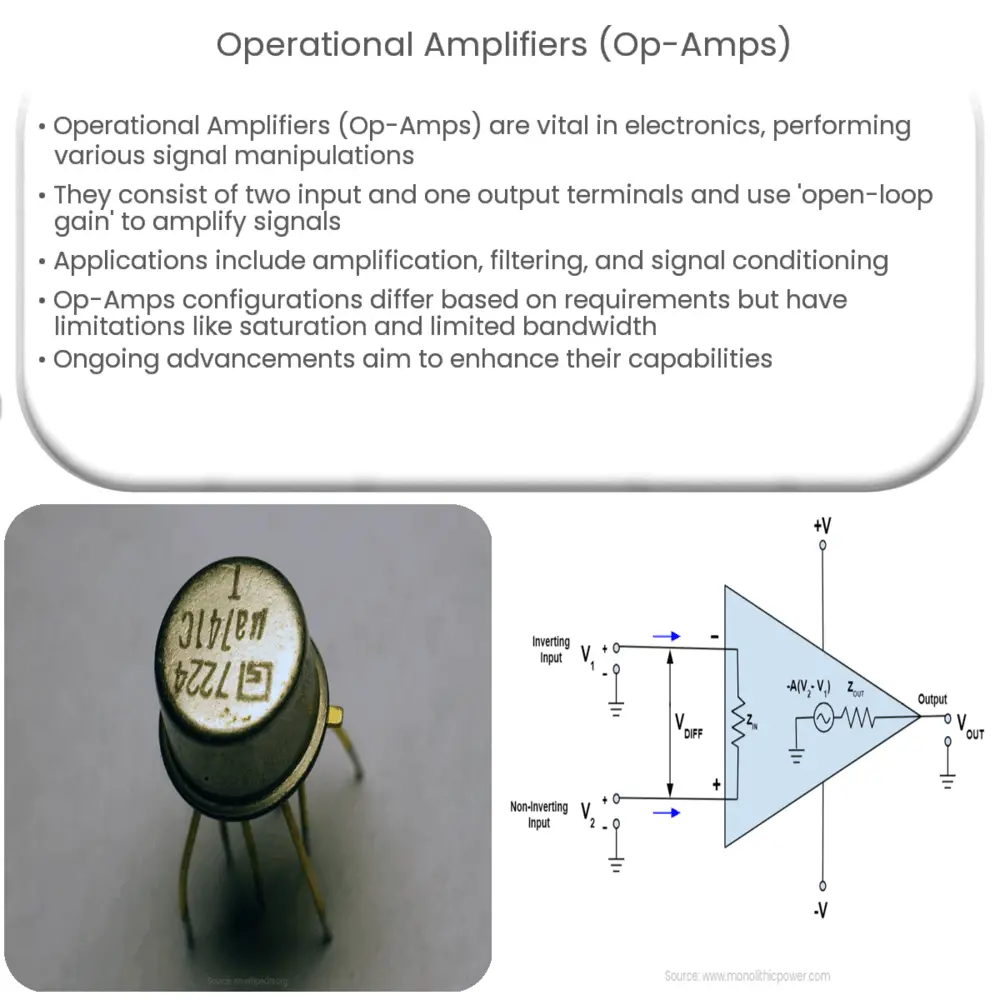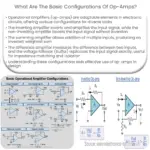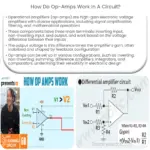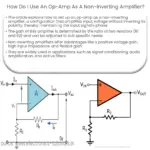Explore the basics, applications, common configurations, and limitations of Operational Amplifiers (Op-Amps) in modern electronics.

Introduction to Operational Amplifiers (Op-Amps)
Operational Amplifiers, or Op-Amps, are a crucial component in many electronic devices. They are integrated circuits that can manipulate electrical signals in various ways, depending on the specific implementation. The name “operational amplifier” originates from their initial use in analog computers, where they were used to perform mathematical operations.
Basic Structure and Functions of Op-Amps
An operational amplifier typically consists of three primary parts: two input terminals, known as the ‘inverting’ (-) and ‘non-inverting’ (+) terminals, and one output terminal. The circuit modifies an input signal based on the difference between the voltages at the two input terminals.
The functionality of an Op-Amp is characterized by its ‘open-loop gain’, or the ratio of the output signal to the difference in the input signals. This gain is typically very high—often in the order of tens or hundreds of thousands—which allows the Op-Amp to amplify weak input signals dramatically.
Applications of Operational Amplifiers
- Amplification: The primary function of an Op-Amp is to amplify a weak signal. This is useful in audio devices, like microphones or sound systems, where weak signals need to be boosted.
- Filtering: Op-Amps can be used to filter unwanted frequencies from a signal. They form the backbone of many active filter designs, due to their high input impedance and low output impedance.
- Signal Conditioning: Op-Amps are used in applications like sensor signal conditioning where they help transform a sensor’s output to a suitable format for subsequent devices.
Common Op-Amp Configurations
There are several common ways Op-Amps are set up in circuits to fulfill different requirements. Some of the most common configurations include:
- Inverting Amplifier: The input signal is applied to the inverting (-) terminal, resulting in an amplified output signal that is 180o out of phase with the input.
- Non-Inverting Amplifier: The input signal is applied to the non-inverting (+) terminal, resulting in an amplified output signal that is in phase with the input.
- Differential Amplifier: This configuration uses both the inverting and non-inverting inputs to amplify the difference between two signals.
- Summing Amplifier: An Op-Amp can be used to add signals together, by applying multiple inputs to the inverting terminal.
- Integrator and Differentiator: These Op-Amp configurations can perform mathematical integration or differentiation of the input signal over time, respectively.
Op-Amp Limitations and Considerations
Despite their utility and flexibility, Op-Amps do have some limitations. Key factors to consider include:
- Saturation: When an Op-Amp reaches its maximum or minimum output voltage, it’s said to be in saturation. This usually happens when the input signal is too large for the Op-Amp to amplify further.
- Bandwidth: The frequency response of an Op-Amp is not flat. As frequency increases, the gain decreases, limiting its effectiveness at higher frequencies. This is characterized by the Op-Amp’s bandwidth.
- Offset Voltage: This is a small voltage that is present at the Op-Amp’s output when the voltage difference at its input terminals is zero. Offset voltage can introduce errors in certain sensitive applications.
Conclusion
Operational amplifiers (Op-Amps) are incredibly versatile and essential components in the field of electronics. They have found widespread use in many applications, such as signal amplification, filtering, and mathematical operations. Despite their inherent limitations, including saturation and finite bandwidth, their utility and adaptability are undeniable.
Continued advancements in semiconductor technology and circuit design are likely to further enhance the capabilities and reduce the limitations of Op-Amps. Whether you are a hobbyist tinkering in your garage, a student learning the fundamentals of electronics, or a professional electrical engineer designing complex systems, understanding Op-Amps is invaluable. They truly are the workhorse of modern electronic circuits.




